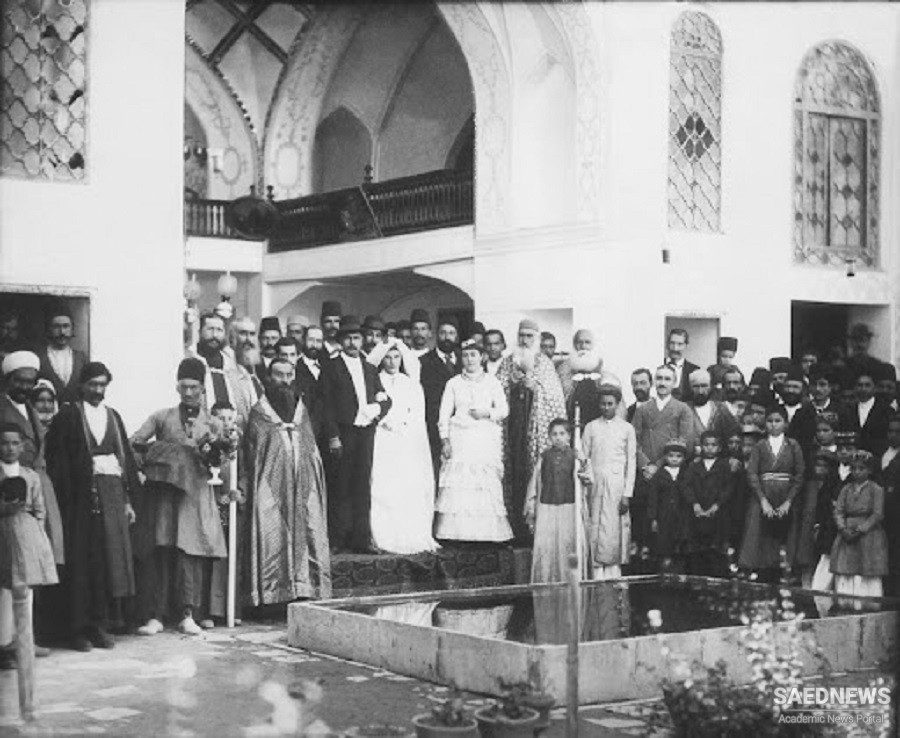In the same period, the chief of the court’s painters (the naqqashbashi) was also an Armenian called Yakobian. If they were valued by the Shah, they could have indirectly influenced his decisions. Yakobian for example was granted authority over the Armenians living in Isfahan, and it seems that henceforth this prerogative remained in the hands of the following naqqashbashis. New Julfa, however, was never subject to their control.The Safavid monarchs had many Christian wives in their harem. However, the majority seem to have been of Georgian or Circassian stock. The absence of Armenian women from the royal harem, as we saw, did not prevent the Armenians from influencing the court. The Safavids commonly selected Armenians as envoys to Europe as their linguistic and commercial talents made them ideal diplomats. Even prior to their deportation to Iran, they had been sent as royal envoys to Europe. The Italian d’Alessandri had met one of them at Venice in 1571, and the Carmelites recorded the arrival of an Armenian messenger at Kashan, sent back by the viceroy of Naples in 1582. They acted as ambassadors for the Georgian kings as well. They were the interpreters who most suited the court, and were usually asked to accompany important foreign merchants or traders acting as diplomats to the court. Tavernier confirms that this was the custom. At his arrival in Iran, the nazir (the head of the Shah’s court) had sent the New Julfa’s kalantar accompanied with eight other Armenian dignitaries to escort the French merchant to the court. Robert and Anthony Sherley were the other European merchants escorted to the court by Armenians.The everlasting wars with the Ottoman Empire were another factor which prevented Shi'ite Iranians from acting as ambassadors, for Armenians on the other hand could traverse Ottoman territory as Iranian agents and negotiate with interested parties in Europe, including Istanbul.715 Many of the Armenian merchants were asked to carry letters from the Shahs to the Pope or other European monarchs, who in turn requested the Armenians to take back their messages to the Shah. Pietro della Valle met one of the Armenian envoys at Qazvin. His name was Ya'qub and he carried a letter from the king of Poland to archiduke Ferdinand and Italian princes. The first contacts between Shah Abbas I and the king of Poland, Zygmunt III Waza, was through an Armenian merchant called Sefer Muratowicz. As discussed earlier, the Armenian merchants had also acted as intermediaries between Iran and Russia, but not always in matters of trade. Shah Sulayman used them as his envoys. By sending Armenian merchants he wished to avoid any kind of suspicion on the part of the Ottomans, especially when military negotiations were involved. In trade posts such as Livorno, where the Iranian silk trade thrived, Armenians acted as Iranian consuls. Occasionally, Armenian priests from Iran were selected by the Pope as representatives of the Vatican to the court of Iran; however, these Armenians had to convert to Catholicism in order to be eligible for such a position. This was the case of Mathieu of Avaniac, bishop of Nakhchevan, who, after being consecrated in Rome, was sent back to Isfahan as the representative of the Pope and the king of France from 1668 until 1674. By the time Father Krusinski visited Iran in the 18th century, Armenian merchants acted even as ambassadors of the Russian Czar in Iran. Thus, they were exempt from paying any customs and excise while doing business in Iran.


 Affluent Armenians and Their Influential Position in Safavid Court
Affluent Armenians and Their Influential Position in Safavid Court














































